I am sonod, a product manager in COGNANO's IT department. Sakurajima House 2022 was held in Kagoshima, Japan on October 28-29, 2022.

Over the two days of the event, there were 24 speakers and a total of about 200 participants, so many that the number of participants was too large to fit into the available slots. COGNANO was invited to participate in the last session on the 29th, the last day of the event, with Imura, CEO at COGNANO, Matsumotory, CTO at COGNANO, and Mr. Yui of Mynavi Corporation took the stage as moderator.
I will report on this session and hope that it will be of interest to those working in the IT industry to learn more about the new challenge of fusing biotechnology and IT.
COGNANO Talk Session
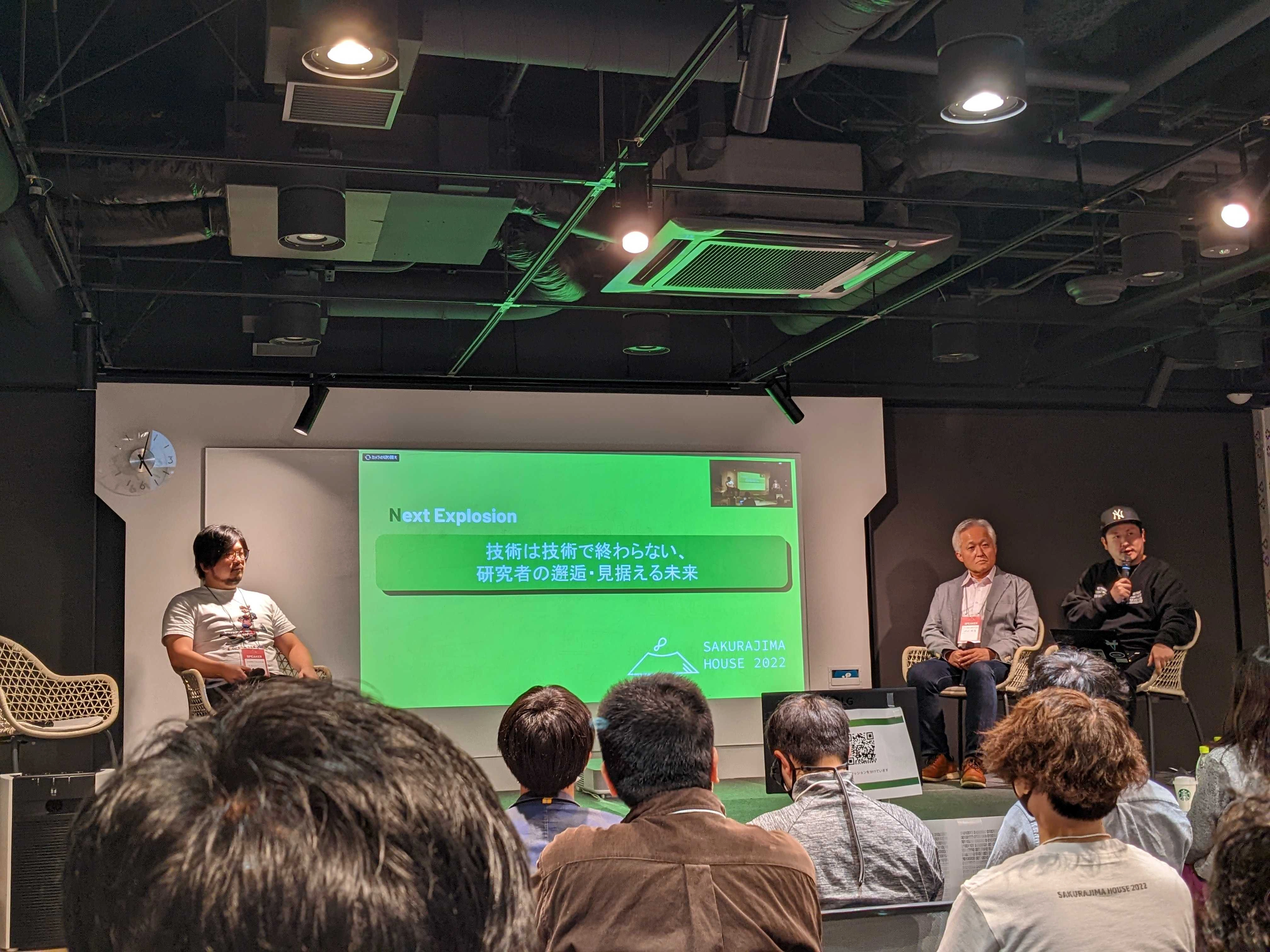
From left, Matsumotory, Mr. Imura, Mr. Yui
The session title is "Technology doesn't end with technology, researchers encounter and look to the future".
Self-introduction by Mr. Imura and Matsumotory

The event began with self-introductions by the speakers. After Mr. Yui's self-introduction, Matsumotory introduced himself, and the audience seemed interested in his various backgrounds: he is a researcher at SAKURA internet Inc. and CTO at COGNANO. Next, Imura, CEO at COGNANO, introduced himself, which was a bit strange. This was because Imura is a biotech specialist who used to work as a doctor and is now the CEO at biotech startup, so his background was not something one would expect to hear at an IT event. However, when Mr. Yui called him "Dr. Imura," Imura said, "I used to be a doctor, so I think you can call me Dr. Imura, but if possible, please call me Mr. Imura," which seemed to soften the atmosphere and convey Imura's personality to the audience.
Description of COGNANO's Business
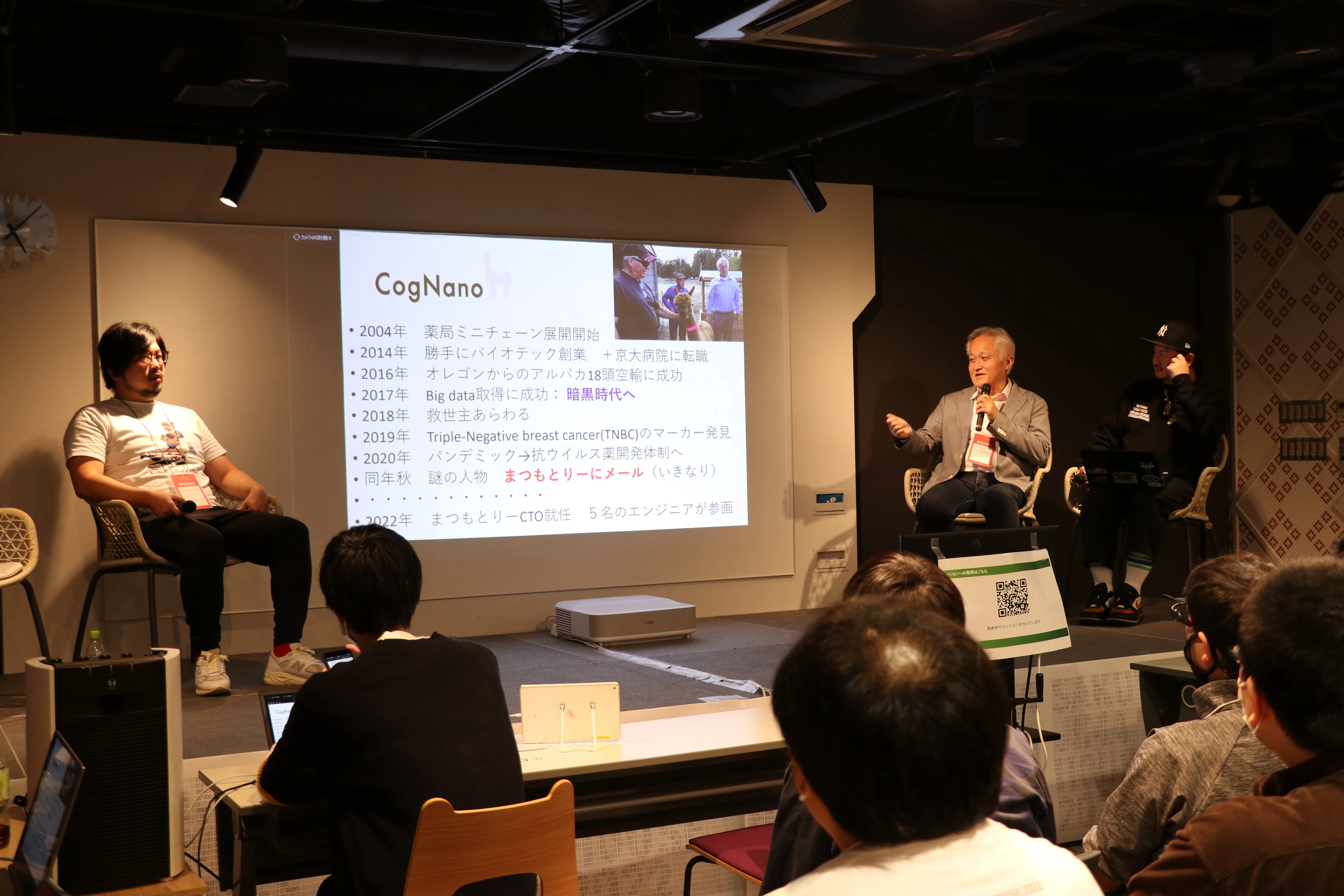
After introducing himself, he moved on to explain his business activities and talked about the important role of alpacas for COGNANO and how he raises alpacas for this purpose. The audience was surprised by his background as a doctor, but seemed more interested in his story of keeping alpacas. From there, the story of alpacas continued for a while, and the audience laughed at the story of how it was difficult to purchase alpacas in Japan due to various regulations, and how he went to Oregon, USA, to purchase them and negotiated with some strong-looking people to airlift 18 of them there. However, his experiments with alpacas did not go well, and he talked about the difficulties he went through during the dark period. It was refreshing to hear him talk about biotechnology and alpacas, one after another, which is rarely heard in the IT industry, in the audience.
When asked what kind of product COGNANO is creating to solve a problem, Imura replied, "As a business, we are creating medicines that mankind has never been able to design before. However, our vision is to understand humans and other living things as a single system. Whether we are well or sick, we see it as a systemic problem." He answered. He continued, "When we are alive every day, the system is working, and it is working even if we don't make any effort. When you are living day by day, a system is working, and you don't have to make any effort. The system is a black box. By turning these things into information, you can keep track of your life in a log. I want to grasp my birth, life, and death as information, not just my thoughts and concepts." He said.
I had heard before that people are still a black box and that there are still many things that have not been fully understood, but I remember being surprised that even with the progress of the times and the advancement of information technology, people are still so unexplained as to be called a black box. I also thought it was very interesting that in this talk, he used expressions that are common to IT, such as "to view people as a system and to grasp them through logs.
Continuing with the story of the product vision, we talked about markers for breast cancer. A marker is something that identifies the location of cancer cells in order to diagnose cancer. In the biotech industry, the use of these markers for diagnosis has become mainstream. Among those cancers, there is a type of breast cancer called triple negative breast cancer (TNBC) for which humans have yet to find a marker. At that time, Imura said, "I thought it was impossible to find the marker because it was done by a human being. I thought that this could be extracted from the data in a very deep way by digging deeper with a machine, and when I tried it, it worked. Then I realized that although bio-data is a base, if it is not supported by a machine, it is ultimately unknowable.".
Imura talked about this as if it were a matter of course, but I believe that the discovery of a marker for TNBC, which mankind had not been able to discover before, has the potential to save many lives in the future. I have always wanted to contribute to society, so I was very happy to be directly involved in this project.
The TNBC marker is being developed for practical use. In the future, we are considering expanding the product to cancers other than breast cancer, so I hope that you will continue to keep an eye on COGNANO.
To learn more about TNBC, please click here.
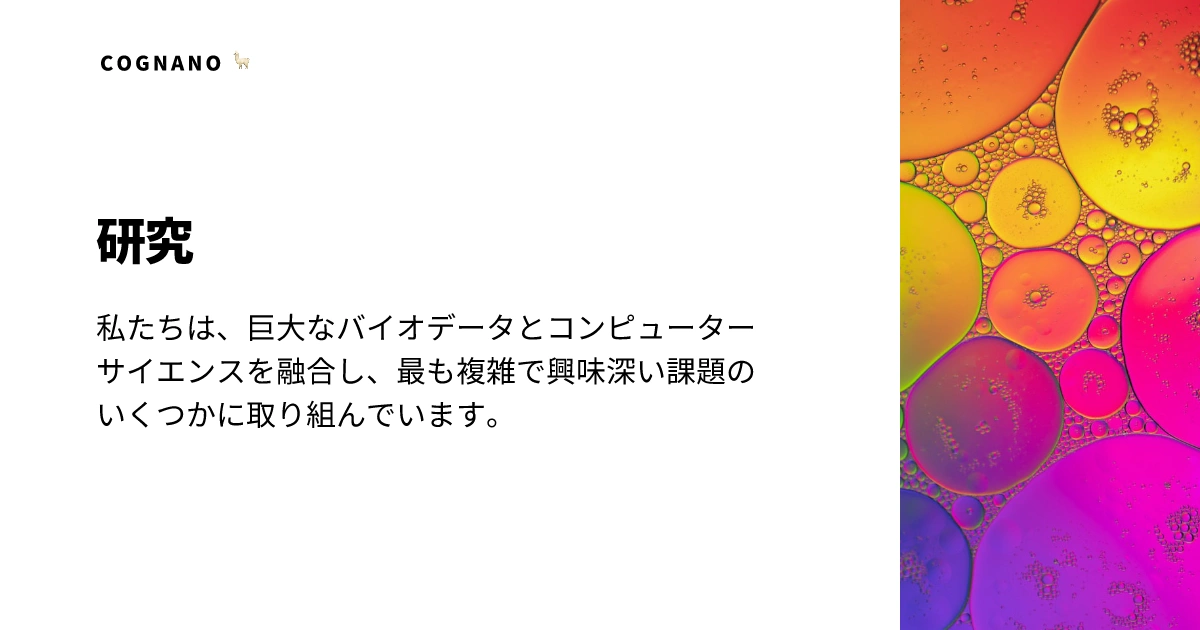
Panel talk and Q&A session
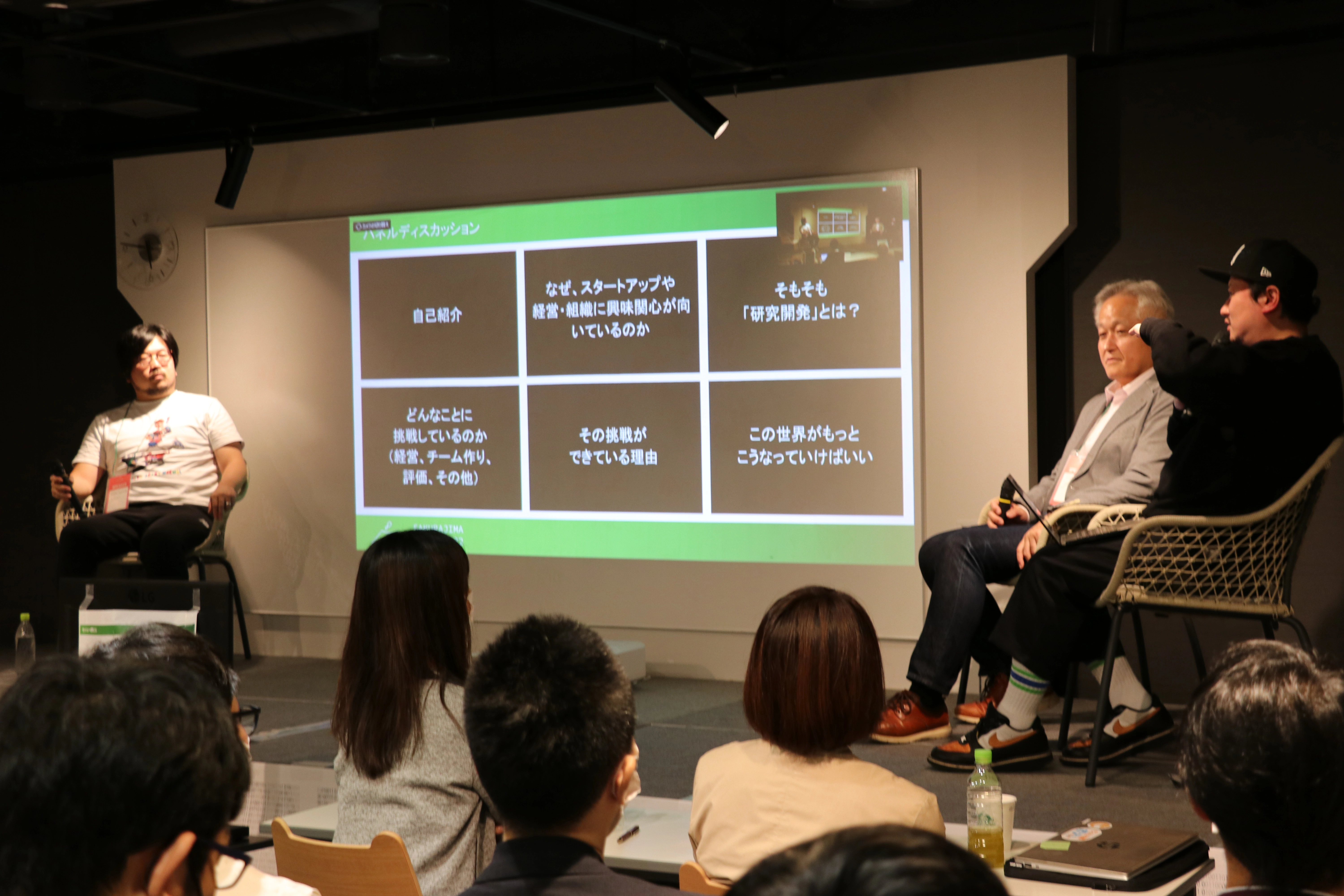
I would like to share with you some of the panel talks that left a lasting impression on me.
Why are you interested in startups, management and organization?

In response to the question, "Why are you interested in startups, management, and organizations?", CTO Matsumotory said, "I have studied a lot, written code and papers, enjoyed contributing to and creating OSS, and have often been approached by people who have used it and given me feedback. I often received feedback from people who used it. However, I felt a long way from being directly useful to society or to anyone else. We began to think about it. That has been our goal for the past few years." I also want to contribute to the world through development and other activities. I myself have been providing services to the world through development and other activities, but I have sometimes wondered if I am contributing to society in this way. For this reason, I felt a great deal of empathy with this thought.
Also, from a product manager's perspective, it is always necessary to be aware of the balance between what one person can do alone and what a team or organization can do together. Product managers are required to have knowledge in a wide range of areas, such as business, UX, and IT technology. However, one person cannot do everything. Therefore, I often have to build a team that can collaborate while providing direction so that each specialist does not get lost in the direction, so I also wanted to keep in mind the point that maximizing the value of the team or organization by working on it together.
How Mr. Imura and Matsumotory meet?
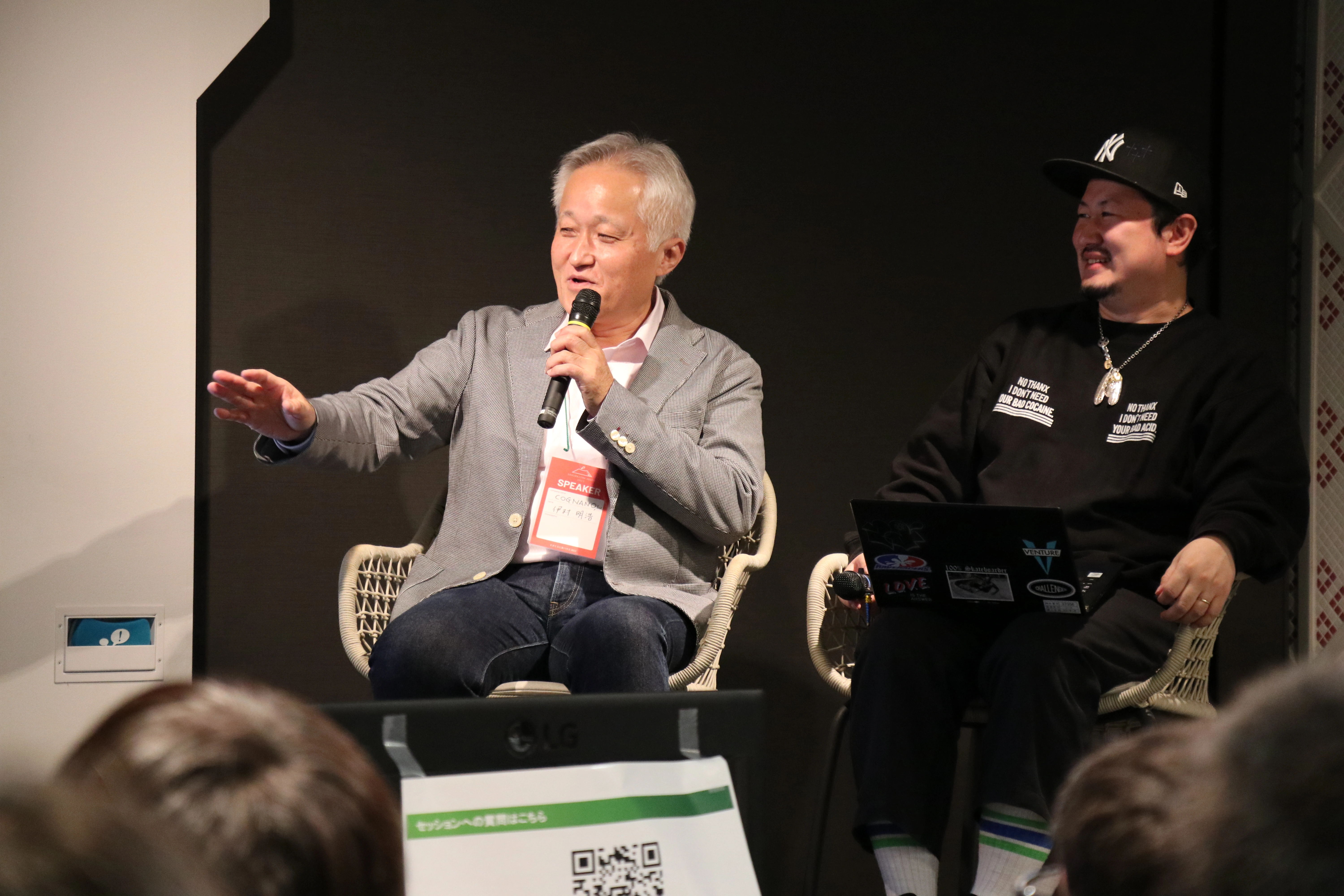
In response to the question, "How did Imura and Matsumotory meet?" Imura said, "I didn't know anything about IT, but I first e-mailed Matsumotory through Gmail in the dark. It seems that their first encounter was a sudden e-mail from Imura. But that e-mail, which was in the midst of the COVID‑19 Vortex, sounded like, "We're going to make a COVID‑19 test device because it's going to sell! and Matsumotory did not immediately trust him. However, after conversing with Imura, Matsumotory said, "I did not know much about biotechnology at the time, but Imura had the depth of medical knowledge to answer any questions I asked him about biotechnology to a level that was easy to understand and satisfactory. Assuming that I trusted Imura from that point on, I began to feel that he was right about the product he was about to create, and the fact that he had found a marker for TNBC in about a year, with solid data, that had never been found by humans before. So, even if I did not know if the detailed bio was true or not, I felt that I should trust Imura, and the picture he was drawing was all correct, and it became clear to me as a story that the world would change if it could be realized," he said. This is something that Imura told me later, but Matsumotory also has a background of 15 years of research on the Internet and systems as if they were life, and as an image, he said, "It was a contrast between web awareness and life systems research, and the two walked from opposite sides and met in the midst of a pandemic.".
This was a story I had felt very much myself. When I decided to participate in COGNANO after hearing Matsumotory's story, I felt a dream and hope that if I could make this happen, I could change society for the better. This feeling is exactly what I had when I started my career as an IT engineer, and it was exactly where I wanted to make a contribution to society through medical care and other means. In addition, when I learned from Imura about the value of COGNANO's data and the story of what COGNANO is aiming for, I felt even more empathy for the company.
There may be another pandemic, but what can Japan do to prepare?

What can Japan do to prepare for what could be another pandemic? Imura replied, "I will only talk about what we can do to prepare. Viruses are changing rapidly, but there has never been a drug discovery system that can respond to these changes. That is why we have been making drugs on an ad hoc basis. If we can convert that into information, we will be able to track by forecasting and analyzing. We are developing a tracking system that will keep up with sequential new strains as they come out." He answered. At this point, Matsumotory said, "When I hear this, it sounds like there are many people doing various things, and COGNANO is one of them, but COGNANO is sometimes the only company in the world that can keep up with mutations. When you see this reality, you can understand how amazing it is. He said.
This story is an important part of COGNANO's efforts to develop a system that can track viral mutations by applying machine learning to its vast and high-quality antibody data. To learn more about virus mutation tracking and tracking, please read this blog.
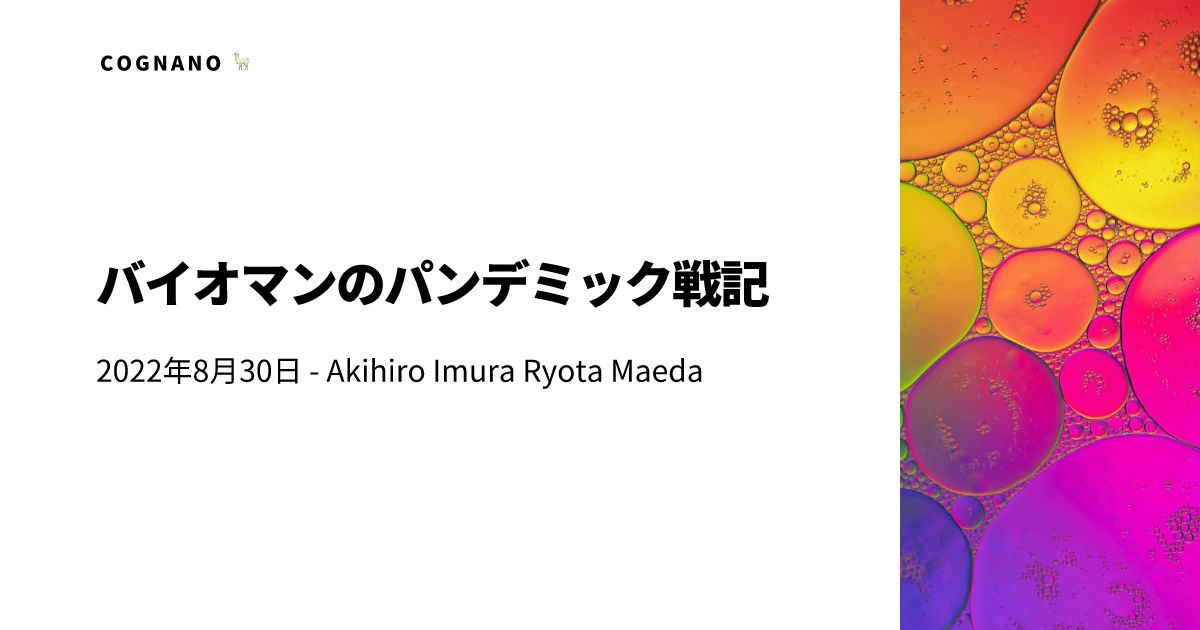
Also see this blog for a description of antibodies and more information about machine learning.

Throughout the session
What both Imura and Matsumotory emphasized was the viewpoint that as long as human beings are living organisms, they are also systems. Life is a system of unexplained phenomena, and we are born, live, and die without even knowing it. Since the human body is also a system, it was thought that deciphering the genome, which is the blueprint, would enable us to understand many life phenomena, but we have not reached the level of understanding we had hoped for. Matsumotory here says, "By analogy, if we compare it to a computer, the genome can be thought of as the source code of the kernel. It is similar to the fact that understanding the source code of the kernel does not allow us to understand the behavior of a web application or system that is multi-layered and complex," was an additional comment, and I thought this explanation would be very easy to understand from an IT engineer's perspective.
There were many other questions and talks besides this, which I hope to eventually publish in a video.
Conclusion
I wrote this report on my participation in Sakurajima House 2022. I hope that through this event, you were able to get a sense of the conviction that biotechnology and IT can cross borders and merge through technology, using the molecular information of life as a common language, and the innovation and interest of what COGNANO is trying to do. I myself learned a lot from listening to Imura and Matsumotory talk about management and organization, even though I was listening to them again. It was also very interesting to hear that as long as people are living organisms, they are also systems and can be thought of in terms of computers.
From now on, we will work to realize a world where all people can live in wellbeing through projects such as the TNBC marker and the virus mutation tracking system that I mentioned this time. Please look forward to COGNANO's future activities.
Thank you for reading to the end.